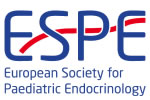hrp0094p2-475 | Thyroid | ESPE2021
Case study of 13- year-old boy suffering from papillary thyroid cancer in stage pT3aN1bMX
Bossowski Artur , Borysewicz-Sanczyk Hanna , Stożek Karolina , Dzięcioł Janusz , Czarniecka Agnieszka , Handkiewicz-Junak Daria , Jarząb Barbara
Papillary cancer represents majority of thyroid malignancies in children. However prognosis remains very successful. In recent years, we use elastography, except biopsy and standard ultrasonography in thyroid lesions diagnostic. We present a case of a male patient at the age of 13 years, with a history of ADHD and school phobia who was referred to Endocrinology Outpatient Clinic due to partial empty sella syndrome. Family history of endocrinological disorders was negative. Ph...



